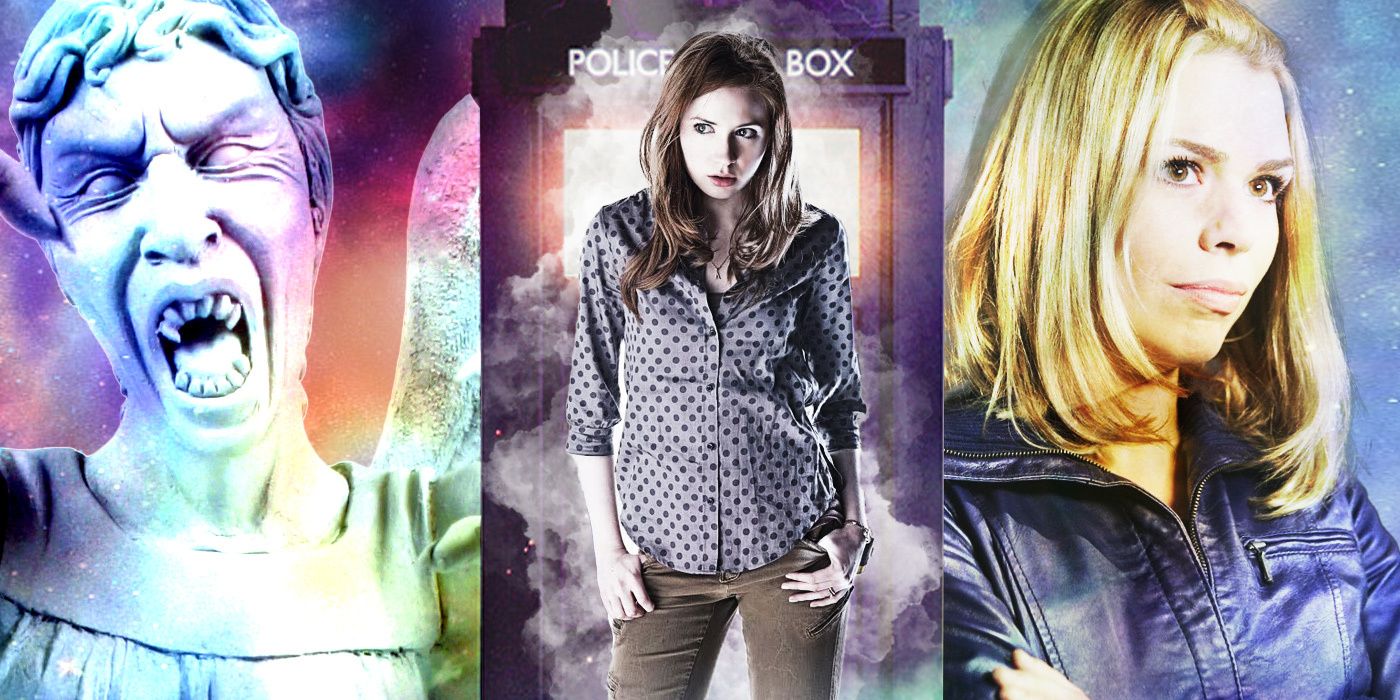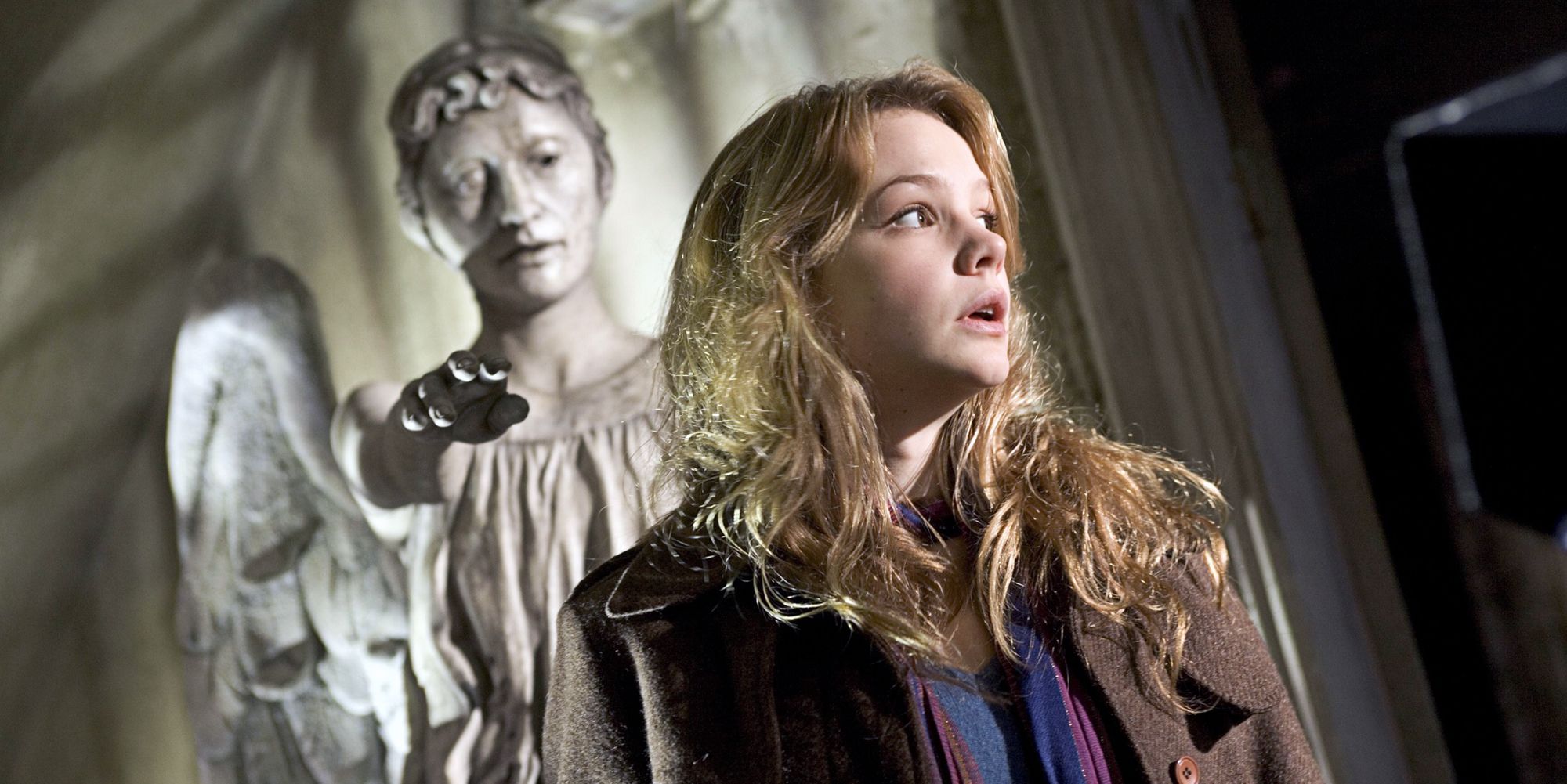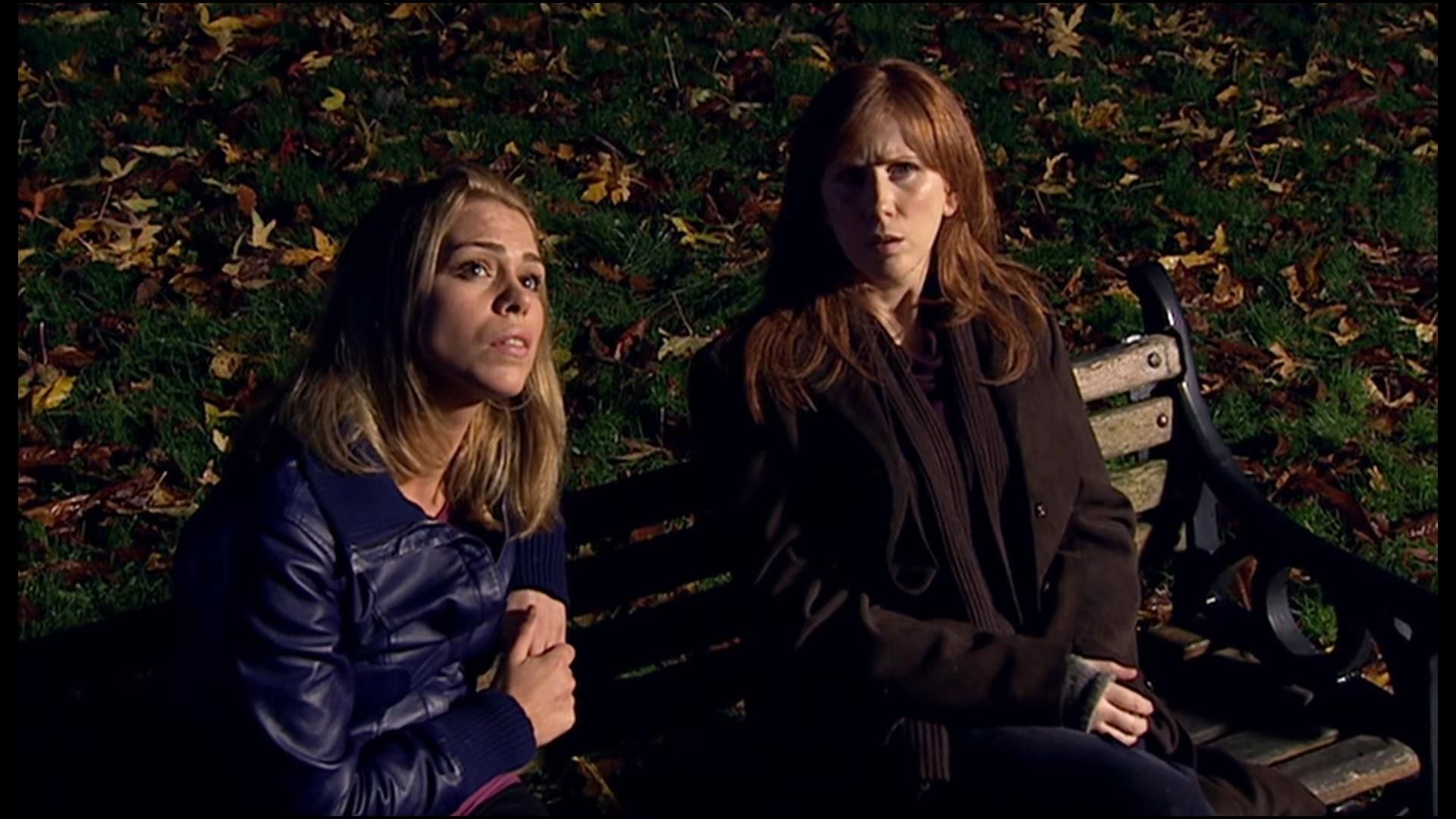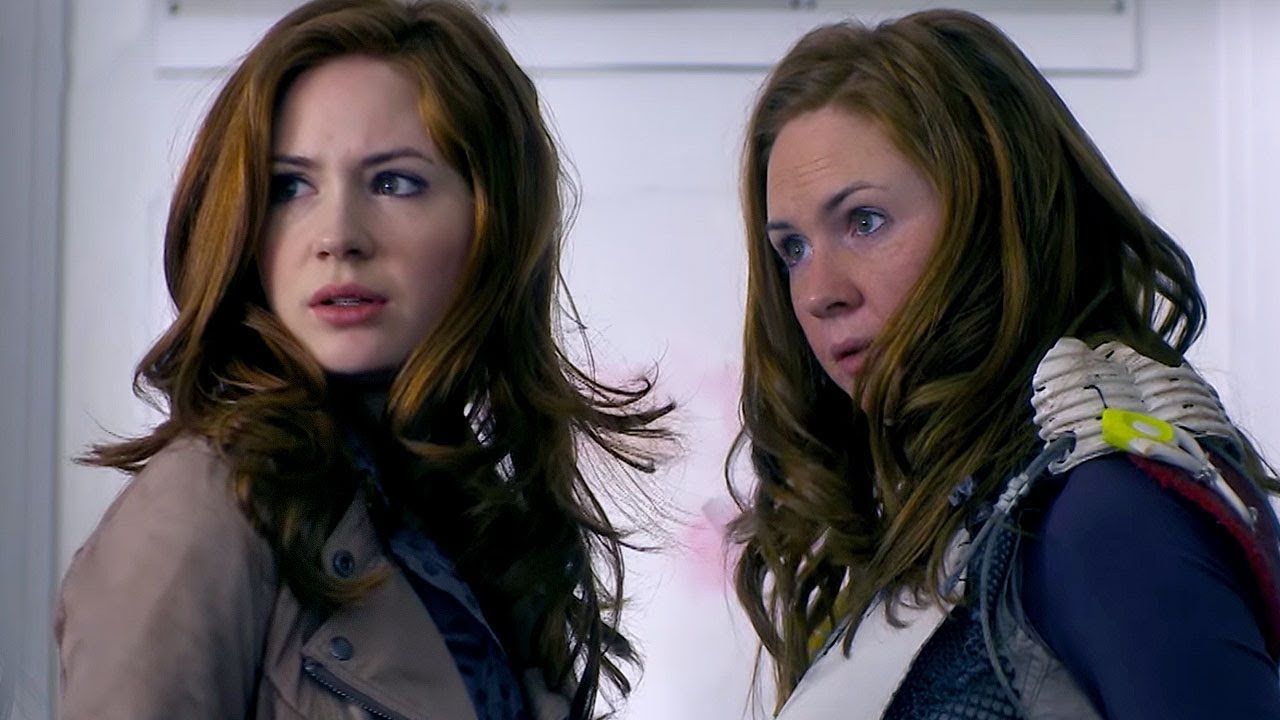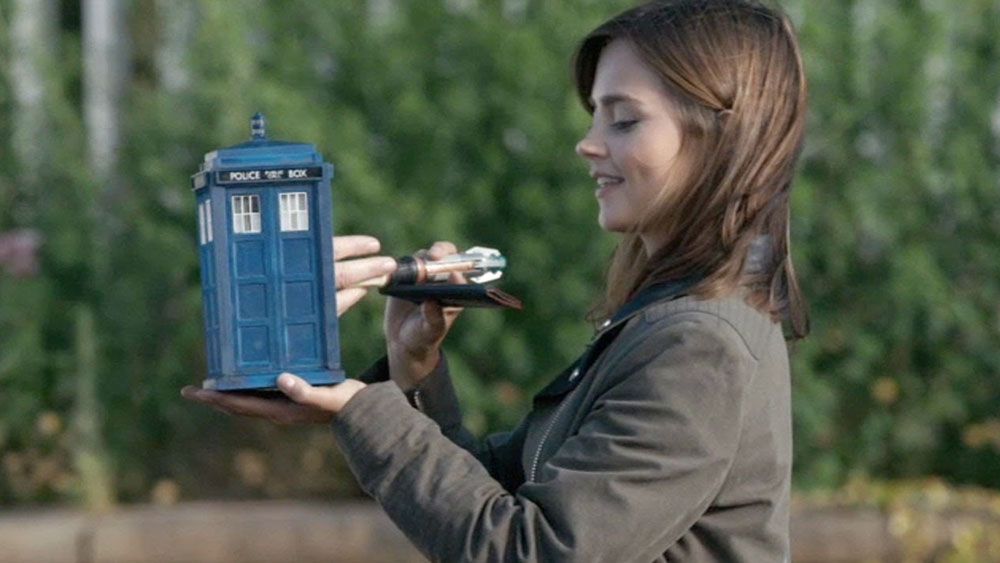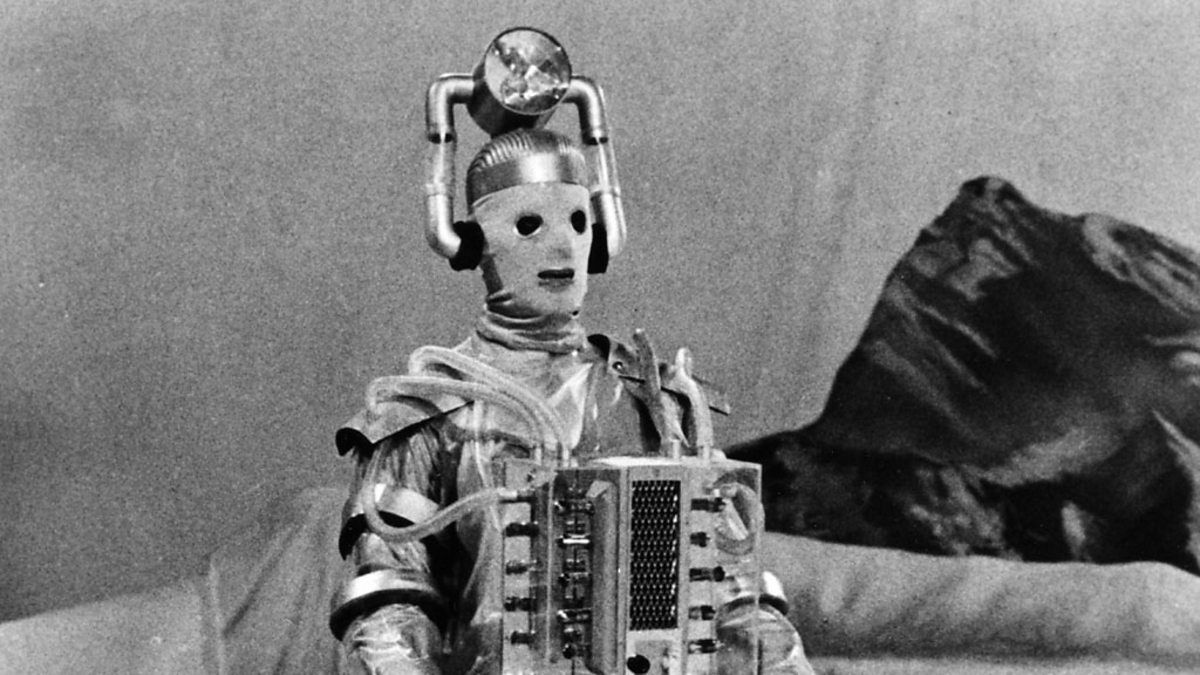It can be hard to imagine a Doctor Who adventure without the Doctor. After all, they are such a key element of the show that their name is in the title. Besides, isn’t it the role of the Doctor to change the lives of the people they meet, turning them upside down and introducing their companions to a whole new world of terrors and wonders? What are these regular humans to do when the rogue Time Lord is not around? Well, they can fight the Weeping Angels, for starters, or they can take over the role of the Doctor and help stop a 2D invasion. Or maybe they can live horrible, depressing lives, but, at least when it comes to fiction, sad and boring aren’t the same thing.
A staple of the 2005 series, the so-called Doctor-lite episodes originated from necessity: in order to shoot all episodes of a given season, particularly the Christmas specials, in time and on budget, the BBC commissioned a few adventures featuring only a handful of scenes with the Doctor. That way, the actor playing the Time Lord could rush to another set right away, ensuring that the production crew got everything they needed for the season without having to work overtime. The counterpart to the Doctor-lite is the companion-lite episode, which served pretty much the same purpose. Think Season 2's "The Girl in the Fireplace" and Season 4's "Midnight," for instance.
Just like any other episode of any TV show, a Doctor-lite story can go both ways. Some of them are "Love and Monsters", which isn't the only bad Doctor Who episode there is, but is certainly among the most egregious examples. Others, however, are some of the greatest the show has ever had. Here's a list of the best Doctor-lite episodes of Doctor Who.
Blink (Season 3, Episode 10)
Frequently cited as Steven Moffat’s best story, Doctor Who’s scariest adventure, and one of the reboot’s greatest episodes, period, “Blink” marks the first appearance of one of the Who-niverse’s most memorable villains. The Doctor (David Tennant) and Martha (Freema Agyeman) take a step back in this adventure, forcing urban explorer Sally Sparrow (Carey Mulligan) to face off against the terrifying Weeping Angels on her own. The Doctor does lend a hand with a series of DVD extras recorded all the way back in 1969, but it’s up to Sally and her friends to keep their eyes wide open lest they face the fury of the Angels.
Originally released in 2007, “Blink” has lost some of its bite over the course of the years due to how boring and even cringe-worthy its monsters became in later episodes of the show, namely Amy (Karen Gillan) and Rory’s (Arthur Darvill) swan song, “The Angels Take Manhattan.” In retrospect, the episode also features many Moffat-isms that would become infamous among Doctor Who and Sherlock lovers in the following years, such as his contempt for fan culture and internet debates in general. Still, “Blink” manages to resist the test of time as one of the spookiest pieces of television of the 2000s and a true testament to how you can tell a great story with very little money. And that ending suggesting that we can all be unknowingly surrounded by Weeping Angels right now? Yeah, I’m never closing my eyes again…
Turn Left (Season 4, Episode 11)
The Doctor-lite counterpart to the companion-lite “Midnight,” “Turn Left” is penned by then-showrunner Russell T. Davies, and features some of his greatest strengths as a screenwriter. The episode is by far the Doctor-litest of them all, since it not only gives the show’s titular character a break but kills him right in the first few minutes. Infected by an alien parasite that, similar to the Weeping Angels, feeds on possibilities and lives not lived, Donna (Catherine Tate) is sent back to her own timeline and makes an apparently innocuous decision that changes the fate of the entire human race. By accepting a job offer from an acquaintance of her mom (Jacqueline King), Donna ends up never meeting the Doctor, and, thus, never stopping him from dying alongside the Racnoss in the events of “The Runaway Bride.” And, without the Doctor, there was no one to stop the Titanic replica from “Voyage of the Damned” from crashing on London nor to avert the Adipose crisis.
It’s a bleak, bleak timeline that Donna and her family are thrown into, and, for the first time, viewers get to experience events not through the eyes of an excited companion, but through the terrified gaze of the people sitting on the sidelines. But what truly sets “Turn Left” apart from other Doctor Who episodes is how Davies casts his monster of the week to the side to present fascism as the true face of evil. Anticipating many of the topics that he would later approach in his critically-acclaimed 2019 miniseries Years and Years, Davies has Donna, Wilfred (Bernard Cribbins), and Sylvia in the middle of a refugee crisis caused by the Titanic explosion, followed by the rise of an “England for the English” government that has terrible consequences for the people they love. Wilfred’s “That’s what they called them last time” line about labor camps is Doctor Who at its most horrifying.
The Girl Who Waited (Season 6, Episode 10)
By Season 6, Doctor Who’s production crew had already gotten the gist of the Doctor and companion-lite episodes and were able to shoot them in ways that made the relative absence of key characters nearly unnoticeable. The most common trick was to shoot all Doctor scenes just in one place, usually inside the TARDIS. Written by Tom MacRae, “The Girl Who Lived” has Amy and Rory running up and down Apalapucia while the Doctor (Matt Smith) guides them from inside his ship. The episode can be seen as a sort of companion piece to Season 5’s “Amy’s Choice”, in which the future of the TARDIS’ crew lies in the hands of Amy Pond, who must choose between a peaceful life as a married woman and her travels with the Doctor. This time, it’s up to Rory to make a seemingly impossible choice between the Amy he knows and an older, bitter version of his wife that has spent decades of her life trapped in an alien care facility that allows people dying of an extremely quick fever to live through years in the span of a day.
“The Girl Who Waited” gives proper weight to the title that has been attributed to Amy ever since she made her debut in the Who-niverse, making us feel the true horrors of spending a lifetime waiting for someone that never comes. However, the older Amy we see in this story is also wiser and stronger than her past self – a survivor through and through. Considering how often Gillan’s character was relegated to the role of damsel in distress, it’s a nice change of pace to see her reaching her full badass potential. Unfortunately, this older Amy also represents a wasted life, both for her and for Rory, who didn’t get to grow old alongside the woman he loves. And when they finally manage to reach the original, younger Amy in her time stream, it’s up to Rory to decide which of the two women will get to leave on the TARDIS. With a heartbreaking ending that paints the Doctor in a very ugly light, “The Girl Who Waited” is yet another push towards the end of the Ponds honeymoon with the Time Lord.
Flatline (Season 8, Episode 9)
As a companion, Clara Oswald (Jenna Coleman) was kind of a mixed bag. Her Impossible Girl arc had an underwhelming conclusion, to say the least, and, for a while, it seemed that no one knew exactly what to do with her. Despite having a few good moments, Clara’s first adventures with Peter Capaldi as the Doctor are usually a little strange, with the writers struggling to find something for her to do now that she’s out of Matt Smiths to flirt with and time streams to jump into. However, it was during Capaldi’s era that Clara truly found her voice, not as an Impossible Girl, but as a sort of Doctor-in-training. In “Flatline”, we get to see her rising up to the task for the first time while the real Doctor is trapped inside a shrinking TARDIS. She has her shortcomings, of course, but, as the Time Lord himself puts it, she made a mighty fine Doctor.
Writer Jamie Mathieson turns the theory of the two-dimensional universe into an exciting, often chilling adventure that is among the best of the past two decades of Who. Between PC Forrest’s (Jessica Hayles) nervous system imprinted on the wall and George’s (Raj Bajaj) transformation into 2D, it’s hard to remain indifferent to the very specific kind of horror that “Flatline” has to offer. Much like “The Girl Who Waited”, the episode has various Doctor-heavy scenes, but all of them shot inside the TARDIS, in a short period of time. This supposed limitation allows for a rich, inventive episode in which Clara gets some much-needed development, reinventing her relationship with the Doctor from scratch with brilliance.
Bonus: The Tenth Planet (Original Series, Season 4, Serial 2)
"The Tenth Planet" wasn't conceived as a Doctor-lite episode. As a matter of fact, the concept of Doctor-lite didn't even exist back in 1966, when William Hartnell was still manning the TARDIS and episodes wrapped up shooting merely hours before airing. Still, in many ways, "The Tenth Planet" can be considered the first Doctor-lite serial ever, with Hartnell being entirely absent from the third part of the story due to being too ill to shoot. At the time, Hartnell was suffering from atherosclerosis, and the disease was one of the factors that contributed to him leaving the show. However, it is unclear whether his health problem during the shooting of "The Tenth Planet" had anything to do with his condition.
Written by Kit Pedler and Gerry Davis, the serial has the Doctor, Ben (Michael Craze), and Polly (Anneke Wills) arriving unannounced at a space tracking station in Antarctica in the far-off future year of 1986. When the station's crew begins to have trouble bringing one of their capsules back to land, the source of the problem is revealed to be the gravitational pull of an unknown planet nearly identical to Earth. The planet is none other than Mondas, home of the original Cybermen. "The Tenth Planet" is a must-watch for fans of Doctor Who not only for introducing one of the series' most iconic villains but also because it features the very first regeneration, with the sadly missing part 4 ending with Hartnell slowly transforming into Patrick Troughton. However, it is also interesting to see how the writing team dealt with the absence of their main character at such an early point in the show's history.
The Doctor is taken to rest right at the first scene of episode 3, having apparently collapsed out of exhaustion. This may sound weird to modern viewers, but it was a nice touch considering that the upcoming regeneration had the Doctor "dying" of weariness and old age. With him out of the picture, it was up to Ben to stop General Cutler (Robert Beatty) from using nuclear weapons on the Cybermen. It's another great example of a companion getting to walk in the Doctor's shoes for a while, even if Ben's steps are way lighter that Clara's in "Flatline," for example. The station's crew also gets extended screen time, which means we get to know more about their personal stakes in the mission. The episode can seem a bit unfocused from time to time, but it's still a great watch and a necessary part of one of Doctor Who's most memorable adventures.

